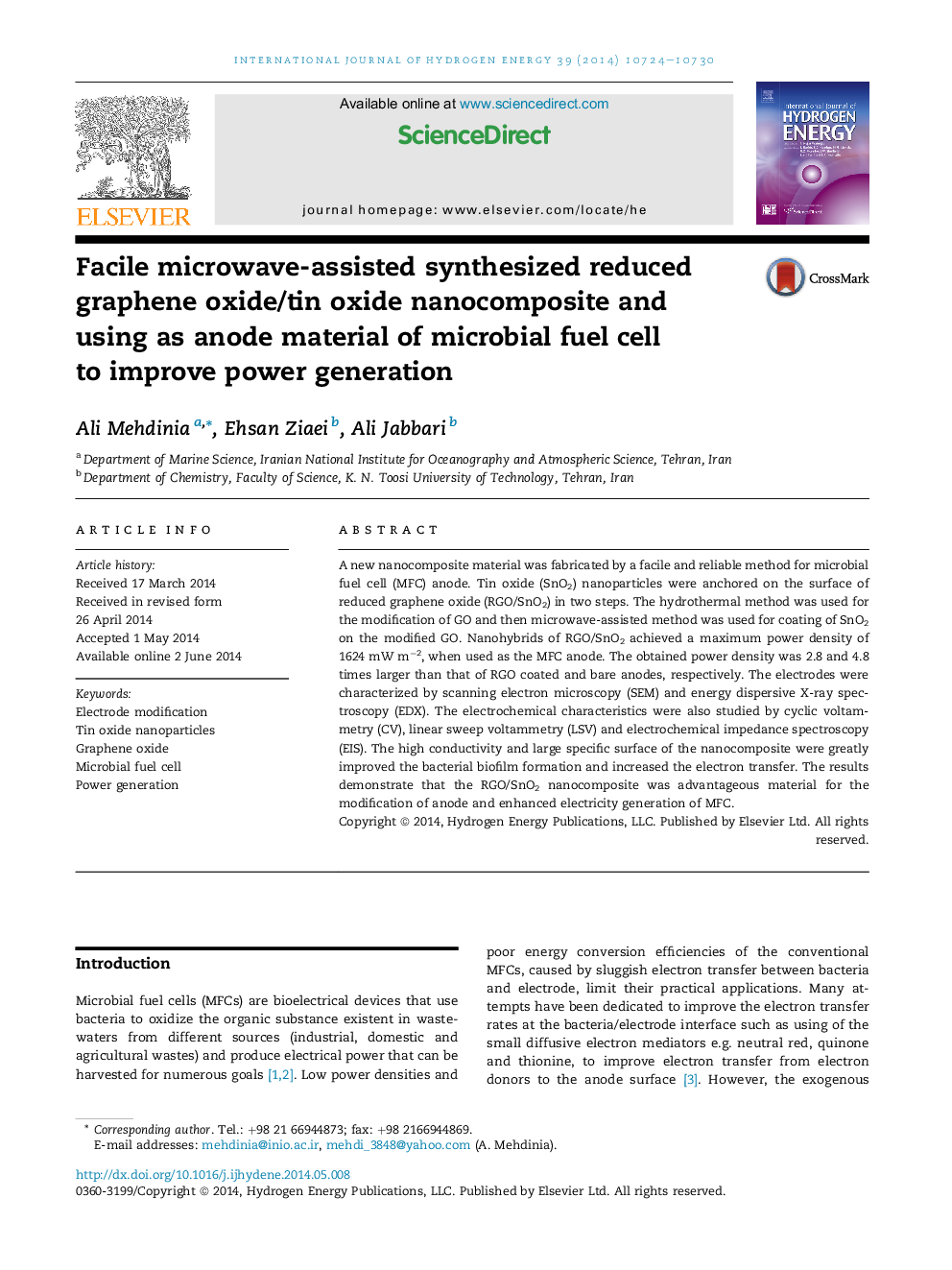| کد مقاله | کد نشریه | سال انتشار | مقاله انگلیسی | نسخه تمام متن |
|---|---|---|---|---|
| 1276197 | 1497489 | 2014 | 7 صفحه PDF | دانلود رایگان |
• A facial microwave-assisted method was developed to synthesize the GO–SnO2 nanocomposite.
• The MFCs with the GO–SnO2 anode obtained a maximum power density of 1624 mW m−2.
• Synergetic effects between SnO2 and GO caused the improvement in MFC performance.
A new nanocomposite material was fabricated by a facile and reliable method for microbial fuel cell (MFC) anode. Tin oxide (SnO2) nanoparticles were anchored on the surface of reduced graphene oxide (RGO/SnO2) in two steps. The hydrothermal method was used for the modification of GO and then microwave-assisted method was used for coating of SnO2 on the modified GO. Nanohybrids of RGO/SnO2 achieved a maximum power density of 1624 mW m−2, when used as the MFC anode. The obtained power density was 2.8 and 4.8 times larger than that of RGO coated and bare anodes, respectively. The electrodes were characterized by scanning electron microscopy (SEM) and energy dispersive X-ray spectroscopy (EDX). The electrochemical characteristics were also studied by cyclic voltammetry (CV), linear sweep voltammetry (LSV) and electrochemical impedance spectroscopy (EIS). The high conductivity and large specific surface of the nanocomposite were greatly improved the bacterial biofilm formation and increased the electron transfer. The results demonstrate that the RGO/SnO2 nanocomposite was advantageous material for the modification of anode and enhanced electricity generation of MFC.
Figure optionsDownload as PowerPoint slide
Journal: International Journal of Hydrogen Energy - Volume 39, Issue 20, 3 July 2014, Pages 10724–10730
